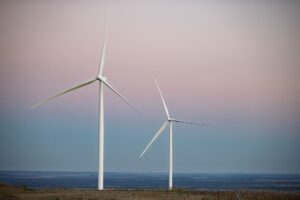Remember the “billionaire tweets” – the rapid exchange of Twitter messages in early 2017 between Australian Mike Cannon-Brookes and Tesla boss Elon Musk, when Cannon-Brookes challenged Musk over his company’s claims that it could help solve South Australia’s grid problems, and build it in less than 100 days.
Musk said he could, the idea was embraced by South Australia’s Labor government and the Tesla big battery at Hornsdale was indeed built in less than 100 days. And it did help solve South Australia’s grid problems. It’s no longer the biggest lithium ion battery in the world, but it is adding new strings to its bow, and has created a blueprint for the future (renewable) grid.
Now it seems that Atlassian co-founder Cannon-Brookes and Musk are talking again, prompted by yet another energy “crisis” – this time of the federal government’s own making: It’s refusal to understand and embrace new technologies, and its heavy-handed intervention in the energy markets.
Cannon-Brookes told ABCs Radio National Breakfast program on Wednesday morning that he had been talking to Musk following his offer to build a big battery near the Liddell coal plant near Newcatle, if that is what the prime minister Scott Morrison wanted.
“I talked to Elon overnight,” Cannon-Brookes told the program, pointing out that battery technology is developing rapidly – so rapidly that big US utilities like NextEra are investing heavily in longer duration battery storage. The point was that as costs come down, and markets are developed, there would be even more potential battery storage solutions in the next three years.
Cannon-Brookes’ plea is for the federal Coalition government to show some clarity over what it actually wants to have built to replace Liddell, rather than just threatening to have its utility subsidiary Snowy Hydro build a 1GW gas plant nearby, which the energy industry has said will leave the market confused, and would likely stop investment rather than encourage it.
“I don’t understand the announcement. There’s a lot of parts of the announcement that don’t make much sense,” Cannon-Brookes said. “All I am asking is ‘what are the rules of that facility’?”
Energy analysts have made clear that the threat of a big gas plant won’t fix the problem, won’t lower prices, or bring down emissions, and will bring other investments to a complete stop. “He needs to listen to the experts,” Cannon Brookes said. “We don’t need any new gas.”
Cannon-Brookes, of course, has other good reasons to talk to Musk. Cannon-Brookes is also backing the massive Sun Cable project – along with iron ore billionaire Andrew Forrest – that is looking at the world’s biggest solar plant (10 gigawatts), backed up by what would be the world’s biggest battery – 20-30 gigawatt hours – that could supply power to Singapore, or anywhere else that our be reached with a cable.
It would make sense for those battery storage plans to involve Tesla, given its prime position in the storage market.
Indeed, one could imagine that the size of that proposed battery would be enough on its own to possibly justify a “gigafactory” to be built in Darwin to supply that installation and some of the other huge batteries that will inevitably be built around the grid.
Cannon-Brookes has talked of multiple projects of that scale that could link other countries and parts of Australia. Each new link would require a big battery of significant scale, to provide the grid services and security not readily provided by large amounts of wind and solar.
The possibilities are fascinating.
If you are going to build a battery gigafactory in Darwin, why not put an electric car production line while you’re at it?
You can see where this could be leading – the much talked about Australian manufacturing renaissance, driven by the availability of super cheap renewable energy, storage, technological know-how, and a can-do attitude. It just needs the conversation to move beyond costly and dirty gas.








